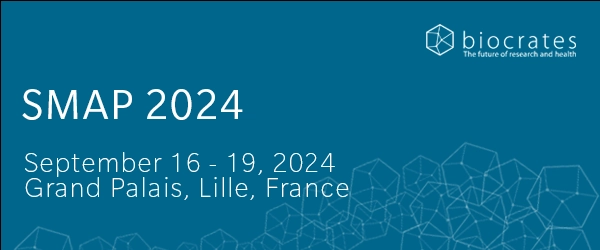Predictive Metabolome of Long-Term Outcome in COVID-19
Introduction
Those who recover from COVID-19, especially after severe cases, have experienced a great deal of pain and discomfort. However, because of potential multi-organ injuries that more closely resemble the situation after sepsis rather than recovery from an Influenza virus infection, COVID-19 survivors often experience long-term consequences of the infection.
For many patients, even after viral clearance, the road to recovery is far from over. For some, these complications are as mild as the inability to smell or taste, while those who are less fortunate can experience lasting respiratory problems, cardiovascular complications or new onset of metabolic disorders.
In this article, we will discuss selected long-term health challenges associated with COVID-19, as well as the metabolic processes that may be associated. We will furthermore highlight the potential to address these challenges through metabolomic research.
Cardiometabolic outcomes
Recent work has revealed associations between COVID-19 and new onset metabolic syndrome, diabetes and changes in the vasculature. This may ultimately contribute to an increased risk for stroke and cardiovascular disease. Moreover, it has been suggested that the elevated risk for diabetes in COVID-19 survivors may be due to a deterioration of metabolic control and direct damage to pancreatic beta cells caused by the virus (Apicella et al., 2020).
It may be unsurprising that COVID-19 has a significant and sustained impact on metabolic homeostasis, given that a long-term follow up study on survivors of the 2002/2003 SARS outbreak found that 50 % of patients lacking a history of Type 2 diabetes (T2D) developed it during the infection. Furthermore, 5 % of cases persisted for an extended period of time. The onset of infection-induced T2D in these patients was accompanied by dysregulated glucose metabolism, hyperlipidemia, and cardiovascular abnormalities, as well as changes in lysophosphatidylcholines and lysophosphatidylinositol. (Wu et al., 2017).
In addition to the direct impact of COVID-19, intensive care is associated with additional health challenges. It is well established that intensive care patients with acute respiratory distress experience dramatic weight loss. While these patients demonstrate rapid recovery back to a normal weight, they tend to gain adipose tissue rather than regaining lean body mass, thereby adding to the risk of cardiometabolic disease. (Chan et al., 2018)
Metabolomics is an attractive technology for assessing and monitoring cardiometabolic risk factors associated with the long-term health impact of SARS-CoV-2 infections. For example, established biomarkers of prediabetes (Wang-Sattler et al., 2012) and the transition from gestational diabetes to T2D (Wheeler et al., 2020) may also aid in determining the risk of diabetes resulting from infection-mediated metabolic dysregulation. In either of the cited cases, the predictive biomarker signatures are multi-factorial. They cover various aspects of the pathophysiology, such as altered glucose metabolism, abnormalities in lipid homeostasis and the metabolism of branched-chain amino acids, as well as perturbations in mitochondrial dynamics. Besides predicting the risk of diabetes, metabolomic signatures have also been helpful in analyzing frailty (Westbrook et al., 2016; Corona et al., 2014) and muscle quality (Moaddel et al., 2016). Moreover, nitric oxide metabolism and arachidonic acid metabolism are two metabolic processes closely related with angiogenesis and immune regulation, thus providing a link between the hyper-inflammatory status during infection and the risk of vascular disease. Thus, such markers may serve as a window into the future, revealing the health status that a patient will achieve upon recovery from COVID-19, and providing a rationale for supportive care.
Neuropsychiatric outcomes
It has been suggested that COVID-19 patients are at greater risk for a range of neuropsychiatric outcomes, including stroke, impaired cognitive function, depression and post-traumatic stress disorder (Varatharaj et al., 2020).
The increased risk of stroke may stem from dysregulation in the coagulation cascade, which could result in bleeding as well as thrombotic events. As tryptophan metabolism is involved in regulating coagulation (Pawlak et al., 2009), this pathway may be valuable for evaluating the risk of stroke. As previously discussed, metabolic dysregulations observed in metabolic syndrome constitute a risk factor for vascular events. especiallycerebrovascular ones, as metabolism is crucial for maintaining healthy blood vessels and facilitating angiogenesis (Draoui et al., 2017).
Extensive studies on Alzheimer’s Disease and Parkinson’s Disease have shown that metabolic parameters exhibit a clear relationship with different components of brain pathology and a good correlation with cognitive scores. In addition, metabolomics has been used in the context of traumatic brain injury (Fiandaca et al., 2018), as well as Huntington’s disease (Graham et al., 2018), which is characterized by a severe inflammatory state, similar to that observed in COVID-19. These studies prove the utility of metabolomics as a minimally-invasive tool for monitoring cognitive and CNS function by means of a small blood sample analysis.
Finally, mental trauma, as from intensive care stress, can have long-term metabolic consequences (Boeck et al., 2016). Depression is increasingly being understood as a disorder that involves inflammatory and bioenergetic components. Metabolomics has shown promise in monitoring pharmaceutical (Cysz et al., 2019) as well as cognitive behavioral therapy (Bhattacharyya et al., 2019) for depression.
Other health challenges
Some COVID-19 survivors, particularly following a severe disease course, suffer from a persistently impaired lung function. In this context, it is noteworthy that cholesterol metabolites are involved in local immune regulation in the lung (Gowdy & Fessler, 2012), which may give them prognostic value regarding the recovery from lung injury. ADMA (Asymmetric Dimethylarginine), a biomarker associated with proteolysis, has been shown to be a strong predictor of long-term outcome in COPD (Vögeli et al., 2017) and thus, may similarly predict long term lung functional outcomes following COVID-19.
Impaired kidney function may be a complication of COVID-19 infections, and kidney damage is being investigated as a potential side effect of Remdesivir treatment (Xu et al., 2020). A number of metabolites have been suggested or are currently in clinical use as biomarkers for impaired kidney function, including creatinine and SDMA (Symmetric Dimethylarginine). The latter, as ADMA, is associated with proteolysis, but relies on renal clearance, thus accumulating when the kidney function is impaired.
Conclusion
COVID-19 is a multifactorial disease with a wide range of pathophysiological processes implicated in defining long-term outcomes. Metabolomics, by profiling of hundreds of metabolites, can inform on many of the involved processes, thus providing a means to better understand the long-term impact of this novel disease.
References
Apicella M, Campopiano MC, Mantuano M, Mazoni L, Coppelli A, Del Prato S.: COVID-19 in people with diabetes: understanding the reasons for worse outcomes (2020) Lancet Diabetes Endocrinol | https//doi.org/10.1016/S2213-8587(20)30238-2
Bhattacharyya S, Dunlop BW, Mahmoudiandehkordi S, Ahmed AT, Louie G, Frye MA, Weinshilboum RM, Krishnan RR, Rush AJ, Mayberg HS, Craighead WE, Kaddurah-Daouk R. Pilot: Study of Metabolomic Clusters as State Markers of Major Depression and Outcomes to CBT Treatment. (2019) Front Neurosci | https://doi.org/10.3389/fnins.2019.00926
Boeck C, Koenig AM, Schury K, Geiger ML, Karabatsiakis A, Wilker S, Waller C, Gündel H, Fegert JM, Calzia E, Kolassa IT. Inflammation in adult women with a history of child maltreatment: The involvement of mitochondrial alterations and oxidative stress.(2016) Mitochondrion | https//doi.org/10.1016/j.mito.2016.08.006
Chan, K. S., Mourtzakis, M., Aronson Friedman, L., Dinglas, V. D., Hough, C. L., Ely, E. W., Morris, P. E., Hopkins, R. O., Needham, D. M., & National Institutes of Health National Heart, Lung, and Blood Institute (NHLBI): Acute Respiratory Distress Syndrome Evaluating Muscle Mass in Survivors of Acute Respiratory Distress Syndrome: A 1-Year Multicenter Longitudinal Study. (2018) Critical care medicine | https://doi.org/10.1097/CCM.0000000000003183
Corona, G., Polesel, J., Fratino, L., Miolo, G., Rizzolio, F., Crivellari, D., Addobbati, R., Cervo, S. and Toffoli, G.: Metabolomics Biomarkers of Frailty in Elderly Breast Cancer Patients. (2014), J. Cell. Physiol | https://doi.org/10.1002/jcp.24520
Czysz A. H., South C., Gadad B. S., Arning E., Soyombo A., Bottiglieri T., et al.: Can targeted metabolomics predict depression recovery? Results from the CO-MED trial. (2019) Transl. Psychiatry | https://doi.org/10.1038/s41398-018-0349-6
Draoui, N., de Zeeuw, P., & Carmeliet, P.: Angiogenesis revisited from a metabolic perspective: role and therapeutic implications of endothelial cell metabolism. (2017) Open biology | https://doi.org/10.1098/rsob.170219
Fiandaca, Massimo S., Mapstone, Mark, Mahmoodi, Amin, Gross, Thomas, Macciardi, Fabio; Cheema, Amrita K. et al.: Plasma metabolomic biomarkers accurately classify acute mild traumatic brain injury from controls. (2018) | https://doi.org/10.1371/journal.pone.0195318
Gowdy, K. M., & Fessler, M. B.: Emerging roles for cholesterol and lipoproteins in lung disease. (2013) Pulmonary pharmacology & therapeutics | https://doi.org/10.1016/j.pupt.2012.06.002
Graham, Stewart F., Pan, Xiaobei, Yilmaz, Ali, Macias, Shirin; Robinson, Andrew, Mann, David; Green, Brian D.: Targeted biochemical profiling of brain from Huntington’s disease patients reveals novel metabolic pathways of interest. (2018) | https://doi.org/10.1016/j.bbadis.2018.04.012
Lai M, Liu Y, Ronnett GV, Wu A, Cox BJ, Dai FF, et al.: Amino acid and lipid metabolism in post-gestational diabetes and progression to type 2 diabetes: A metabolic profiling study. (2020) | https://doi.org/10.1371/journal.pmed.1003112
Moaddel, Ruin; Fabbri, Elisa; Khadeer, Mohammed A., Carlson, Olga D., Gonzalez-Freire, Marta, Zhang, Pingbo et al.: Plasma Biomarkers of Poor Muscle Quality in Older Men and Plasma Biomarkers of Poor Muscle Quality in Older Men and Women from the Baltimore Longitudinal Study of Aging. (2016) | https://doi.org/10.1093/gerona/glw046
Moraes LA, Unsworth AJ, Vaiyapuri S, Ali MS, Sasikumar P, Sage T, Flora GD, Bye AP, Kriek N, Dorchies E, Molendi-Coste O, Dombrowicz D, Staels B, Bishop-Bailey D, Gibbins JM. : Farnesoid X Receptor and Its Ligands Inhibit the Function of Platelets. (2016) Arterioscler Thromb Vasc Biol. | https://doi.org/10.1161/ATVBAHA.116.308093
Pawlak K, Mysliwiec M, Pawlak D.: Hypercoagulability is independently associated with kynurenine pathway activation in dialysed uraemic patients. 82009) Thromb Haemost. | https://doi.org/10.1160/TH08-10-0696
NWS, Pollak TA, Tenorio EL, Sultan M, Easton A, Breen G, Zandi M, Coles JP, Manji H, Al-Shahi Salman R, Menon DK, Nicholson TR, Benjamin LA, Carson A, Smith C, Turner MR, Solomon T, Kneen R, Pett SL, Galea I, Thomas RH, Michael BD; CoroNerve Study Group: Neurological and neuropsychiatric complications of COVID-19 in 153 patients: a UK-wide surveillance study. (2020) Lancet Psychiatry | https://doi.org/10.1016/S2215-0366(20)30287-X
Varatharaj A, Thomas N, Ellul MA, Davies Vögeli A, Ottiger M, Meier MA, Steuer C, Bernasconi L, Kulkarni P, Huber A, Christ-Crain M, Henzen C, Hoess C, Thomann R, Zimmerli W, Mueller B, Schuetz P.: Admission levels of asymmetric and symmetric dimethylarginine predict long-term outcome in patients with community-acquired pneumonia. (2017) | https://doi.org/10.1186/s12931-017-0502-4
Vögeli A, Ottiger M, Meier MA, Steuer C, Bernasconi L, Kulkarni P, Huber A, Christ-Crain M, Henzen C, Hoess C, Thomann R, Zimmerli W, Mueller B, Schuetz P.: Admission levels of asymmetric and symmetric dimethylarginine predict long-term outcome in patients with community-acquired pneumonia. (2017) | https://doi.org/10.1186/s12931-017-0502-4
Wang-Sattler Rui, Yu Zhonghao, Herder Christian, Messias Ana C., Floegel Anna, He Ying et al.: Novel biomarkers for pre-diabetes identified by metabolomics. (2012) | https://doi.org/10.1038/msb.2012.43
Wu, Q., Zhou, L., Sun, X. et al. Altered Lipid Metabolism in Recovered SARS Patients Twelve Years after Infection. Sci Rep 7, 9110 (2017) | https://doi.org/10.1038/s41598-017-09536-z
Xu Z., Tang Y. Zhenjian, Huang Q., et al.: Whether Remdesivir Increases the Risk of Acute Kidney Injury (AKI) in Patients with COVID-19: A Systematic Review and Meta-Analysis. (2020) | PREPRINT (Version 1)







